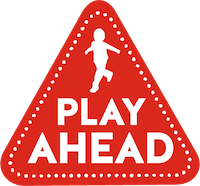How to Play:
Ten Tips for Helping Kids Play Ahead
As any parent or caregiver can tell you, the list of responsibilities that comes along with raising a child can sometimes seem unending. Just keeping a child well fed and well-groomed can feel like a full-time job, and that’s without even considering the social, emotional and academic oversight that we need in our youngest years.

But when it comes to play? Running, jumping, painting, pretending — play is just the child’s job, right?
Not exactly. While it’s true that children will naturally be drawn to playtime — and there’s no need to provide them with step-by-step instructions — knowing the benefits of play can make a big difference. It allows a parent or caregiver to help children get the most out of the time they spend playing. From fundamental concepts to socialization skills, language development and much more, recent research shows that play has a positive impact on a child’s academic performance. And the more often they engage in play — especially in safe, supportive surroundings such as those found at all four area locations of the Children’s Museum — the more likely they are to find success both inside and outside the classroom. Or to put it another way, when children play ahead, they get ahead!
Of course, even when we take an educated interest in playtime, it’s still a chance to take a subtle step back as a parent or caregiver. Allowing a child to initiate the play, including what to play, how to play and with whom to play, is known as child-directed play. Letting the child have control over these decisions provides rich opportunities to observe how a child is learning, while also empowering children to explore in their own unique and unrestrained ways.
Here are ten tips to help parents and caregivers engage in more meaningful play, that can have long-lasting results:
1. Follow your child’s lead.
You always want to ensure safety when playing, but you don’t need to exercise complete control.
2. Play alongside your child.
Parents and caregivers can often offer a child variety in playtime activities that siblings or peers cannot.
3. Pay attention!
Try not to let your mind wander to other thoughts or be distracted by messages on your phone. Be responsive to a child’s frequent changes in the focus of play.
4. Listen.
Be present for what the child is expressing through play — even when it might not immediately make sense to you!
5. Provide narration
Talk about what the child is doing.
6. Consider yourself a “guest.”
Enter the child’s world, on the child’s terms, as much as possible.
7. Be open.
Don’t close the door on fun and silliness!
8. Don’t multitask.
Allow enough time for solid, uninterrupted play.
9. Stay close.
Be nearby and ready to offer support, so the child feels safe.
10. Let the play flow.
Children often move from one idea and aspect of play to another quickly and without explanation. Let playtime evolve and change on their terms. Visit any of the four Children’s Museum locations today to enjoy unique exhibits and new experiences, always designed to promote learning through play.
